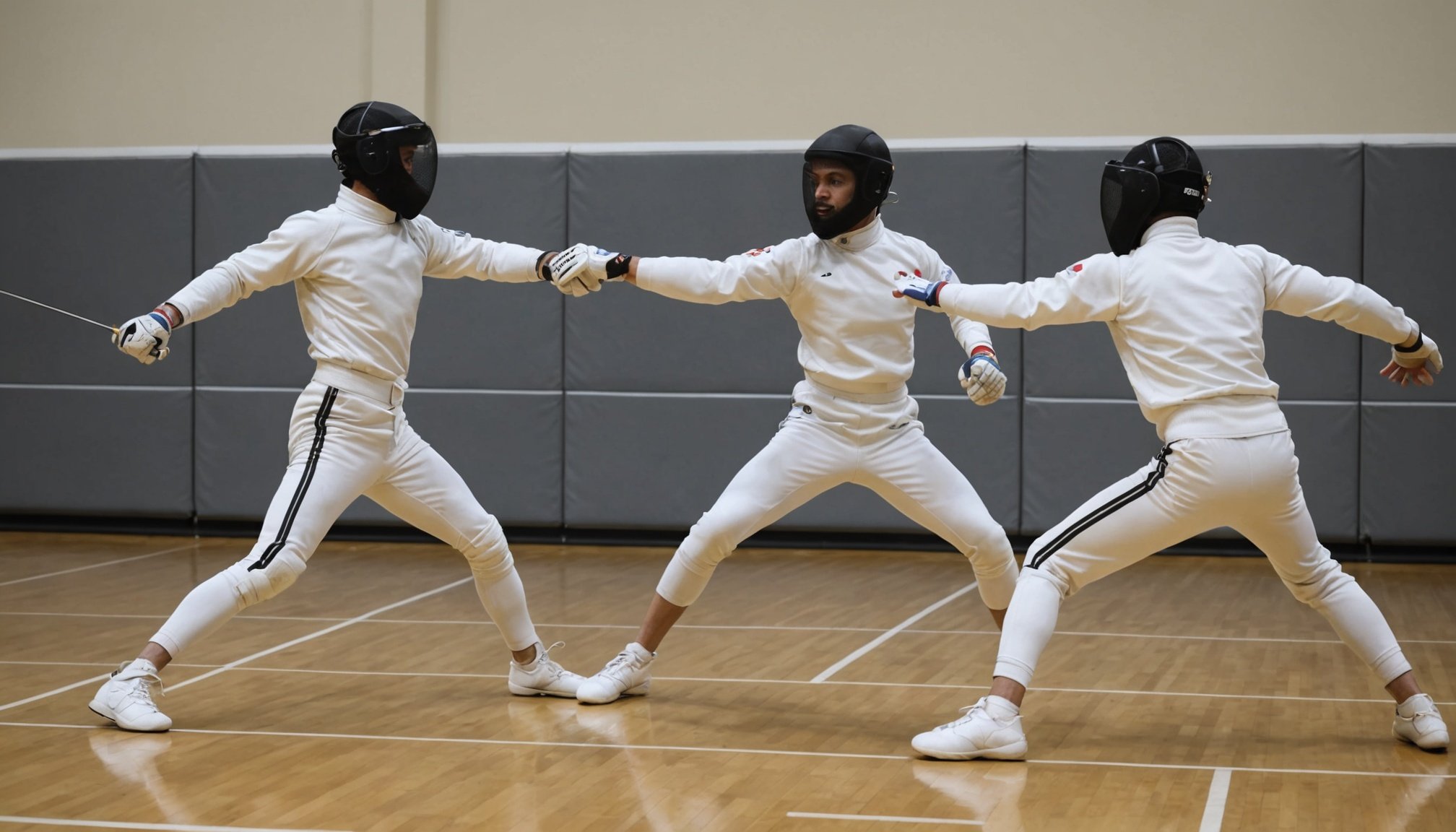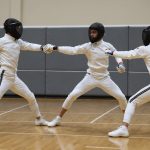Understanding Fencing Footwork
Footwork is the cornerstone of fencing performance, serving as the foundation for all movements in the sport. Proper footwork techniques enhance a fencer’s ability to manoeuvre swiftly, improving speed and agility, crucial for both offence and defence.
Fencing basics highlight the diversity in footwork, essential for maintaining distance and executing attacks. There are various styles used in fencing footwork, each tailored to specific tactical needs. The most prominent techniques include the advance, retreat, lunge, and fleche, each serving distinctive purposes. The advance and retreat allow fencers to control their positioning against an opponent, ensuring optimal distance.
Also to read : How can understanding the biomechanics of a golf swing enhance performance?
Speed improvement through structured footwork drills is vital. Quick, controlled movements enable fencers to react to opponents’ actions effectively, maintaining a strategic advantage. Agility in footwork is closely linked to a fencer’s reflexes, enhancing the ability to launch sudden or unexpected attacks. Developing these skills requires consistent practice focused on balance, coordination, and precision. During training, fencers often utilise exercises that target these areas, such as ladder drills or directional changes.
By mastering these footwork basics, fencers can hope to achieve a balance between offence and defence, positioning themselves effectively to gain the upper hand in bouts. This understanding ensures a strategic edge and boosts overall performance.
Also to see : Sharpening skills: boosting accuracy in professional darts with innovative mental training strategies
Key Techniques for Speed in Fencing
To improve speed techniques in fencing and maximize performance, mastering specific fencing drills is essential. Understanding the mechanics and implementing effective drills can significantly enhance a fencer’s agility and reaction time.
Sprint and Lunge Technique
The mechanics of efficient lunging focus on maintaining balance while projecting forward with speed. Proper body alignment and footwork are critical. Drills to improve lunge speed include practicing rapid-fire lunges with a focus on explosive starts. An explosive start can be achieved by pushing forcefully off the back foot, gaining momentum swiftly. These techniques are crucial for closing the gap between fencers and launching effective attacks.
Side Step and Retreat
Effective side stepping is paramount for evasion and positioning. Executing a swift, balanced side step allows fencers to dodge attacks and reposition quickly. To hone this skill, practicing drills that involve quick lateral movements and retreats is beneficial. Quick retreats are essential for defensive maneuvers, enabling a fencer to create space. Drills focusing on agility and lateral speed enhance these abilities.
Incorporating Plyometrics
Plyometric exercises significantly enhance a fencer’s speed and agility. They involve explosive movements like jumps and sprints, which boost muscle power. Examples of plyometric drills include box jumps and hurdle hops. Safety is crucial; therefore, fencers should ensure proper form and gradual progression in their training routines to prevent injuries. Incorporating these exercises can enhance overall performance.
Drills to Enhance Agility
Enhancing agility and optimizing footwork are crucial in physical training, especially in disciplines requiring quick directional changes and precise movements. Agility drills and footwork exercises can significantly elevate performance levels by honing these skills. Let’s explore a few effective training strategies.
Ladder Drills
Ladder drills are excellent for improving footwork, coordination, and speed. These drills involve performing rapid and precise step sequences through a flat ladder on the ground. Fencers, for example, can benefit by integrating ladder drills into their routine to foster nimbleness and accuracy. Key exercises include:
- In-and-out steps where you move quickly in and out between ladder rungs with both feet.
- Carioca drill, emphasizing lateral movement with a criss-cross step pattern.
To maximize drill effectiveness, focus on proper posture, engage your core, and maintain a consistent pace. Use visual cues and practice regularly to develop muscle memory. Gradually increase speed while maintaining control, ensuring agility and footwork precision are improved.
Common Mistakes in Footwork
Footwork errors are a widespread issue among fencers, often undermining their performance. The most typical mistakes include incorrect stance and movement patterns, such as leaning too far forward or back, which can lead to instability. Furthermore, uneven weight distribution can make quick, strategic moves challenging, leaving fencers vulnerable. These footwork errors can significantly impact a fencer’s ability to effectively execute attacks and defenses, as fluid movement is crucial in fencing.
Identifying these fencing flaws is the first step toward improvement. For instance, frequent loss of balance might indicate improper posture or inconsistency in the footwork rhythm. Fencers should pay attention to how their feet position in relation to their target, as misalignment can disrupt their strategy.
To correct footwork errors, various correction techniques can be employed. Fencers should practice maintaining a low, stable stance with their knees slightly bent to promote agility. Regular drills focusing on consistent, balanced step lengths can help prevent common mistakes. Moreover, video analysis can be a valuable tool in identifying and rectifying faults, allowing fencers to self-assess and adjust. Practicing these techniques can gradually enhance footwork precision, leading to improved overall performance.
Tips for Effective Practice
When embarking on a journey of skill development, incorporating practice strategies is key to unlocking potential.
Creating a Training Routine
A well-structured training routine is essential for effective training. It should encompass the right balance of elements tailored to your current abilities and goals. Consistency plays a crucial role in practice routines, fostering continuous progression and helping transform weaknesses into strengths. Regularly adjusting your training routine according to varying skill levels can prevent stagnation and ensure steady improvement.
Setting Goals for Improvement
Setting measurable goals helps in orchestrating impactful skill development. Begin by defining specific targets such as refining footwork technique or increasing agility. Progress tracking through quantifiable milestones, like timing your movements or counting successful repetitions, holds you accountable and makes the development tangible. Accountability is crucial, as it inspires continued dedication to your objectives.
Utilizing Video Analysis
Self-assessment using video analysis carries measurable benefits. Watching recordings of your practice can illuminate blind spots in technique and enhance self-awareness. Techniques such as frame-by-frame examination allow a detailed look at form and execution. This visual feedback helps identify required adjustments, turning insights from video reviews into actionable tips for refining and perfecting your skills.











